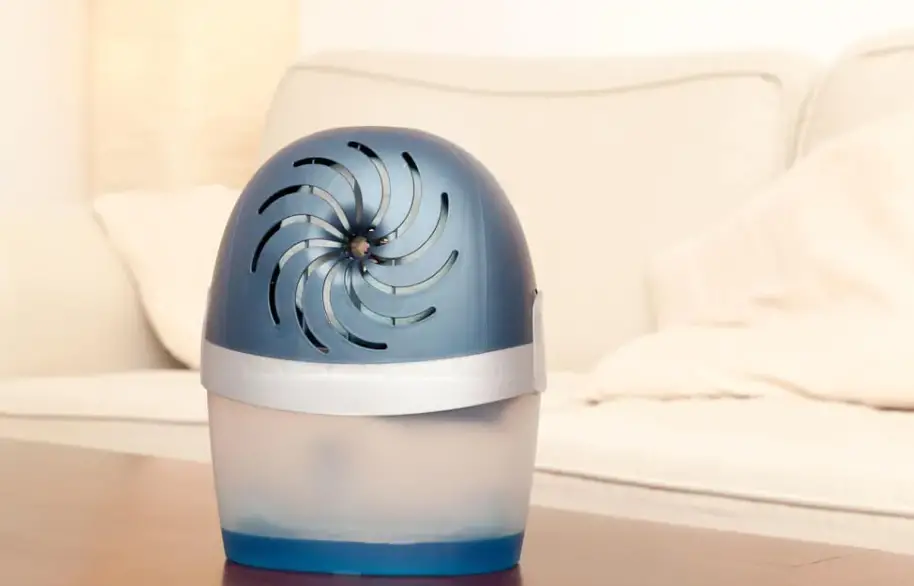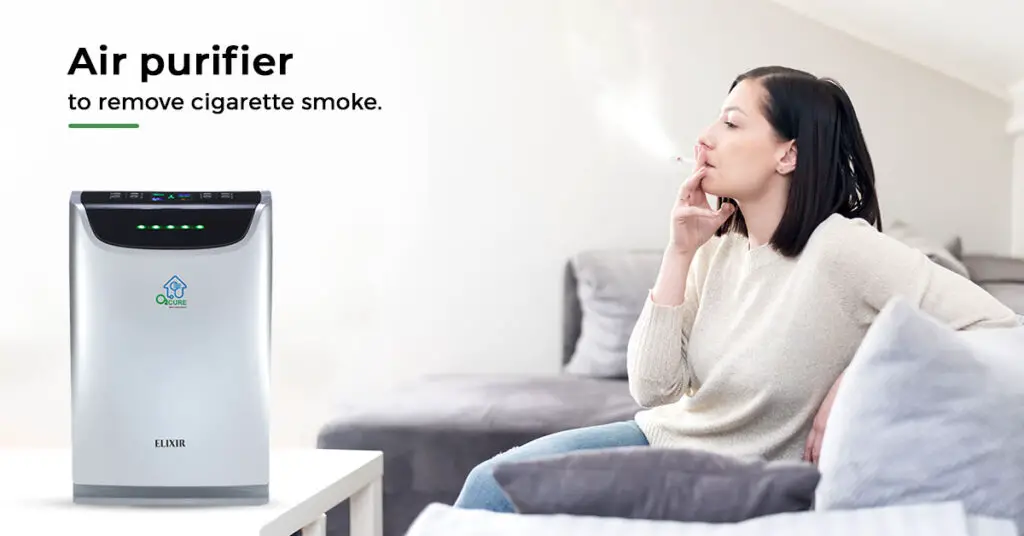Do you know the difference between an air purifier, humidifier, and dehumidifier? If not, don’t worry! You’re not alone. Many people don’t know the difference between these three appliances. The commonality between these three machines is that they all improve indoor air quality in one way or another. This article will inform you about the differences between air purifiers, humidifiers, and dehumidifiers. It will also provide tips on how to use and choose these appliances for your home.
What Is Indoor Air Quality?
Indoor air quality (IAQ) refers to the air quality within and around buildings and structures, especially as it relates to the health and comfort of building occupants. IAQ can be affected by gasses (including carbon monoxide, radon, and volatile organic compounds), particulates, microbial contaminants (mold, bacteria), or any mass or energy stressor that can introduce contaminants into the indoor environment.

One of the most important ways to ensure good IAQ is to control the source of contaminants. However, once contaminants are introduced into the indoor environment, they can be removed using one or more of the following methods: ventilation, filtration, sorption onto surfaces, and ultraviolet germicidal irradiation. That’s why many people opt to use an IAQ solution like an air purifier, humidifier, or dehumidifier [1].
Air Purifier, Humidifier, Dehumidifier: How Do They Work?
There are three devices that you may need in your house to ensure the quality of your indoor air: an air purifier, a humidifier, or a dehumidifier. All three of these devices serve different purposes and work in different ways, so it’s important to understand the difference between them before making a purchase.
An air purifier is a device that cleans the air in your home by removing pollutants and allergens. Air purifiers come in many different shapes and sizes, but they all work by pulling in dirty air and passing it through a filter that traps the contaminants.
A humidifier is a device that adds moisture to the air in your home. Humidifiers come in many different shapes and sizes, but they all work by releasing water vapor into the air.
A dehumidifier is a device that removes moisture from the air in your home. Dehumidifiers come in many different shapes and sizes, but they all work by sucking in humid air and releasing it back into the room at a lower humidity level [2].
What’s the Difference Between an Air Purifier, a Humidifier, and a Dehumidifier?
The main difference between an air purifier, a humidifier, and a dehumidifier is their purpose. Air purifiers remove contaminants from the air, humidifiers add moisture to the air, and dehumidifiers remove moisture from the air.
Air purifiers are ideal for people who suffer from allergies or asthma because they can remove pollen, dust, pet dander, and other allergens from the air. Humidifiers are ideal for people who live in dry climates or who have dry skin because they can add moisture to the air, which can help relieve dryness. Dehumidifiers are ideal for people who live in humid climates or who have mold problems because they can remove moisture from the air, which can help prevent mold growth [3].
Types of Dehumidifiers
There are several types of dehumidifiers, and each has unique features that make it more or less suitable for specific environments. The most common type of dehumidifier is the refrigerant dehumidifier, which uses a refrigeration system to remove moisture from the air. Refrigerant dehumidifiers are often used in industrial and commercial settings because they can handle large volumes of air.

Desiccant dehumidifiers use a drying agent to absorb moisture from the air. These units are often used in very dry climates, as they can be more effective than refrigerant dehumidifiers in these conditions.
Evaporative dehumidifiers work by circulating air over a wet wick or pad, which evaporates the water and removes it from the air. These units are often used in humid climates, as they are less expensive to operate than refrigerant dehumidifiers.
Types of Air Purifiers
There are several types of air purifiers on the market, each with its own set of benefits and drawbacks. The most common types of air purifiers include mechanical filters, activated carbon filters, ozone generators, and ultraviolet germicidal irradiation (UVGI) systems.
Mechanical filters are the most common type of air purifier. They work by using a fan to draw in contaminated air, which is then passed through one or more filters that capture pollutants before recirculating clean air back into the room. The most common type of mechanical filter is the HEPA (high-efficiency particulate air) filter, which can trap up to 99.97% of particles that are 0.3 microns in size.
Activated carbon filters are another type of mechanical filter. They work in a similar way to regular mechanical filters, but they also contain activated carbon, which is a highly porous material that can absorb odors and volatile organic compounds (VOCs).
Ozone generators create ozone, which is a reactive gas that can break down pollutants like VOCs, bacteria, and mold spores. However, ozone can also be harmful to human health, so these types of air purifiers are not recommended for use in occupied spaces.
UVGI systems use ultraviolet light to kill bacteria and viruses. These systems are often used in hospitals and other public places where there is a risk of airborne infections.
Types of Humidifiers
There are two main types of humidifiers: warm-mist and cool-mist. Warm-mist humidifiers work by heating water to create steam, which is then released into the air. Cool-mist humidifiers, on the other hand, use a fan to disperse water droplets into the air. There are also ultrasonic humidifiers, which use high-frequency vibrations to generate water droplets and release them into the air.
Humidifiers work by adding moisture to the air. This can be done either through evaporation or ultrasonic waves. Evaporative humidifiers work by using a wick filter that draws water from a reservoir and into the air. The fan then blows across the wet wick, vaporizing the water and releasing it into the room.
Ultrasonic humidifiers work by using a piezoelectric transducer to create vibrations in the water. These vibrations break the water into fine droplets, which are then released into the air.
Which Do You Need? Humidifiers vs Dehumidifiers vs Air Purifiers

In fact, according to the Environmental Protection Agency (EPA), indoor air can be up to five times more polluted than outdoor air. And since you spend an average of 90% of your time indoors, that’s a pretty big deal.
So what can you do to improve the air quality in your home and protect your health? One solution is to invest in an air purifier, humidifier, or dehumidifier – or all three! The humidifiers will be a great solution for your dry and irritated skin in the winter.
Main benefits and disadvantages of these devices
The main benefits of an air purifier are that it can remove many airborne contaminants, including dust, pollen, mold spores, and bacteria. Additionally, some air purifiers also feature activated carbon filters, which can remove odors and VOCs (volatile organic compounds) from the air.
The main disadvantage of an air purifier is that it does not address the root cause of most indoor air pollution problems: poor ventilation. Additionally, air purifiers can be expensive to purchase and operate.
The main benefits of a humidifier are that it can add moisture to the air, which can help to relieve dry skin and nasal congestion. Additionally, some research has shown that humidifiers may also reduce the spread of certain viruses, such as the flu.
The main disadvantages of a humidifier are that it can encourage the growth of mold and dust mites, and may also aggravate asthma symptoms. Additionally, humidifiers require regular cleaning to prevent the growth of bacteria and other microbes.
The main benefits of a dehumidifier are that it can remove excess moisture from the air, which can help to reduce mold growth and musty odors. Additionally, dehumidifiers can also help to relieve respiratory problems caused by high humidity levels.
The main disadvantages of a dehumidifier are that they can be expensive to purchase and operate, and they require regular emptying. Additionally, dehumidifiers can cause the air to feel cold and dry, which can be uncomfortable for some people.
How About an Air Purifier with Built-in Humidifier? Yay or Nay?
If you’re on the lookout for an air purifier that also offers humidification capabilities, you’re not alone. In fact, many people believe that using an air purifier and humidifier together is the best way to achieve optimal indoor air quality. And while there are some benefits to using a combo unit, there are also a few things you should know before making your purchase.
Benefits of Using an Air Purifier with Built-in Humidifier
Increased Efficiency: Perhaps the biggest advantage of using a combo unit is increased efficiency. When your air purifier and humidifier are working together, they can more effectively clean and moisturize the air in your home.
Save Money: Another benefit of using a combo unit is that it can help you save money. Instead of buying two separate units, you can invest in one unit that does the job of both.
Easy to Use: Combo units are also generally easy to use. Most units have a single control panel that allows you to operate both the air purifier and humidifier functions.
Say Goodbye to Allergies: If you suffer from allergies, using an air purifier with a built-in humidifier can be a game-changer. By removing allergens from the air and adding moisture, combo units can help relieve allergy symptoms.
Create the Perfect Environment: Whether you’re trying to fight off a cold or just want to create a comfortable environment, using an air purifier with a built-in humidifier can help. By controlling the humidity in your home, you can create an environment that’s perfect for your needs [4].
Things to Consider Before Buying an Air Purifier with Built-in Humidifier
Maintenance: One of the things you should consider before buying an air purifier with a built-in humidifier is maintenance. While combo units are generally easy to maintain, they do require regular cleaning and filter changes. Be sure to read the product manual carefully to understand how to properly maintain your unit.
Cost: Another thing to consider before buying an air purifier with a built-in humidifier is the cost. These units tend to be more expensive than traditional air purifiers and humidifiers. However, the increased cost may be worth it if you’re looking for a more efficient way to improve indoor air quality.
Size: When shopping for an air purifier with a built-in humidifier, size is another important consideration. Be sure to choose a unit that’s the right size for your needs. If you have a large home, you’ll need a bigger unit than someone with a smaller home.
Noise levels: One final thing to consider before buying an air purifier with a built-in humidifier is noise level. These units can range from very quiet to quite loud. If the noise level is a concern, be sure to choose a unit that’s specifically designed to be quiet.
If you’re looking for an effective way to improve indoor air quality, using an air purifier with a built-in humidifier may be the best option. These units are generally easy to use and require minimal maintenance. However, they are typically more expensive than traditional air purifiers and humidifiers.
Comparison of Air Purifiers, Humidifiers, and Dehumidifiers
Understanding the differences between air purifiers, humidifiers, and dehumidifiers is essential for improving indoor air quality and comfort. Below is a comparison of these devices, helping you choose the right solution for your specific needs.
| Device Type | Function | Benefits | Considerations | Common Uses |
|---|---|---|---|---|
| Air Purifier | Removes airborne particles, allergens, and pollutants, improving air quality. | Enhances respiratory health, reduces allergy symptoms, and purifies the air in enclosed spaces. | Doesn’t add or remove humidity, not suitable for controlling humidity levels. | Allergy-prone individuals, homes with pets, areas with high pollution. |
| Humidifier | Adds moisture to the air, increasing humidity levels for better comfort and health. | Alleviates dry skin, sinus congestion, and respiratory issues caused by low humidity. | Doesn’t filter air or remove pollutants, requires regular cleaning to prevent mold growth. | Dry winter months, homes with low humidity, improving indoor comfort. |
| Dehumidifier | Removes excess moisture from the air, reducing humidity levels to prevent issues like mold and mildew. | Prevents mold growth, reduces allergens, and creates a less hospitable environment for dust mites. | Doesn’t filter air or add humidity, may have higher energy consumption, particularly in larger models and continuous use scenarios. | Humid climates, rainy seasons, damp basements, areas with moisture issues. |
Explanation of the table:
- The table provides a comparison of air purifiers, humidifiers, and dehumidifiers, addressing their functions, benefits, considerations, and common uses.
- Each device type is described, highlighting its specific role in improving indoor air quality and comfort.
FAQ
Do I need both a dehumidifier and an air purifier?
The answer to this question depends on the specific circumstances of your home. If you live in an area with high humidity, then a dehumidifier is probably a good idea to help keep your indoor air quality balanced. However, if you have allergies or asthma, an air purifier may also be necessary to remove pollen, dust, and other allergens from the air.
Can I use a humidifier and an air purifier at the same time?
Yes, you can use a humidifier and an air purifier at the same time. Many people find that using both types of devices helps improve their indoor air quality overall. Just be sure to follow the manufacturer’s instructions for each device to ensure proper operation.
Do air purifiers help with dust mites?
Yes, air purifiers can help reduce the number of dust mites in your home. Dust mites are tiny creatures that thrive in warm, humid environments and feed on dead skin cells. They are a common trigger for allergies and asthma attacks. By removing them from the air, an air purifier can help reduce your symptoms.
What is the best way to remove cigarette smoke from indoor air?
Cigarette smoke is made up of a variety of harmful chemicals, including carbon monoxide, formaldehyde, and benzene. The best way to remove these pollutants from your indoor air is to use an air purifier with a high-efficiency particulate air (HEPA) filter. HEPA filters are designed to remove 99.97% of particles 0.3 microns or larger from the air, making them very effective at removing cigarette smoke.

Do air purifiers help with stuffy rooms?
No, air purifiers do not help with stuffy rooms. If your room feels stuffy, it is likely due to high humidity levels. In these cases, you will need a dehumidifier to remove the excess moisture from the air.
Do I need an air purifier if I have central air conditioning?
The answer to this question depends on your specific circumstances. If you have central air conditioning, it will filter the air in your home and remove some pollutants. However, central air systems are not designed to remove all pollutants from the air. If you have allergies or asthma, an air purifier may be necessary to help reduce your symptoms.
How often should I change the filter in my air purifier?
The frequency with which you need to change the filter in your air purifier depends on the specific device and the type of filter it uses. Many air purifiers have reusable filters that only need to be replaced every few months, while others use disposable filters that need to be changed more frequently. Consult your air purifier’s manual for specific instructions.

My home has a musty smell. What can I do about it?
If your home has a musty smell, it is likely due to high humidity levels. In these cases, you will need a dehumidifier to remove the excess moisture from the air. Dehumidifiers can help improve your indoor air quality and reduce the chances of mold and mildew growth.
Can I use a humidifier, dehumidifier, and air purifier at the same time?
Yes, you can use all three types of devices at the same time. Many people find that using a combination of these devices helps to improve their indoor air quality overall. Just be sure to follow the manufacturer’s instructions for each device to ensure proper operation.
What is the primary function of an air purifier?
An air purifier is designed to remove airborne particles, allergens, dust, pet dander, and pollutants from the air, improving indoor air quality and making it healthier to breathe.
What is the main purpose of a humidifier in a home?
A humidifier adds moisture to the indoor air, increasing humidity levels. This is particularly beneficial in dry climates or during the winter to prevent dry skin, congestion, and promote comfortable living conditions.
What does a dehumidifier do, and when is it most useful?
A dehumidifier removes excess moisture from the air, reducing humidity levels. It is most useful in damp or humid environments to prevent mold growth, mildew, and other issues associated with high humidity.
Can I use an air purifier and a humidifier in the same room?
Yes, you can use an air purifier and a humidifier in the same room. In fact, combining these devices can help improve air quality by removing contaminants and adding moisture simultaneously.
Can I use an air purifier and a dehumidifier together to address indoor air quality issues?
Using an air purifier and a dehumidifier together can be an effective approach to improve indoor air quality. The air purifier removes airborne pollutants, while the dehumidifier reduces excessive moisture, minimizing the risk of mold and allergens.
Are there situations where using all three devices (air purifier, humidifier, and dehumidifier) is recommended?
Using all three devices in the same space is rarely necessary. Typically, you would choose between a humidifier and a dehumidifier based on the specific needs of your environment, while an air purifier can complement either device to improve air quality.
How can I determine which device (air purifier, humidifier, or dehumidifier) is most suitable for my home?
The choice between an air purifier, humidifier, or dehumidifier depends on the specific environmental conditions and the air quality concerns you have. Consider factors like humidity levels, air quality, and any respiratory issues when making your decision.
Can an air purifier replace the need for a humidifier or dehumidifier?
An air purifier can improve air quality by removing pollutants, but it cannot replace the specific functions of a humidifier or dehumidifier. Each device serves a unique purpose, and their use depends on the indoor environment’s needs.
Do air purifiers, humidifiers, or dehumidifiers use a lot of electricity in daily operation?
The energy consumption of these devices varies, but they typically do not use a significant amount of electricity in daily operation. Modern models are designed to be energy-efficient, and their power consumption is relatively low.
Useful Video: Air Purifier VS Dehumidifier (Difference Between Air Purifier and Dehumidifier)
Conclusion
Air Purifiers, Humidifiers, and Dehumidifiers are devices that can help improve the quality of your indoor air. If you’re looking to remove contaminants from your air, an air purifier is the best choice. If you live in a dry climate and want to add moisture to the air, a humidifier is a good option. And if you live in a humid climate and need to remove excess moisture from the air, a dehumidifier is your best bet. No matter which device you choose, make sure to read the instructions carefully and follow all safety precautions. With proper use, these devices can help improve your indoor air quality and create a more comfortable living environment.
References
- https://www.epa.gov/indoor-air-quality-iaq/introduction-indoor-air-quality
- https://www.choice.com.au/home-and-living/cooling/dehumidifier/articles/humidifier-vs-dehumidifier-vs-air-purifier
- https://airmavericks.com/blog/air-purifier-vs-humidifier-vs-dehumidifier-whats-the-difference
- https://learnmetrics.com/best-air-purifier-and-humidifier-combo/














Leave a Reply